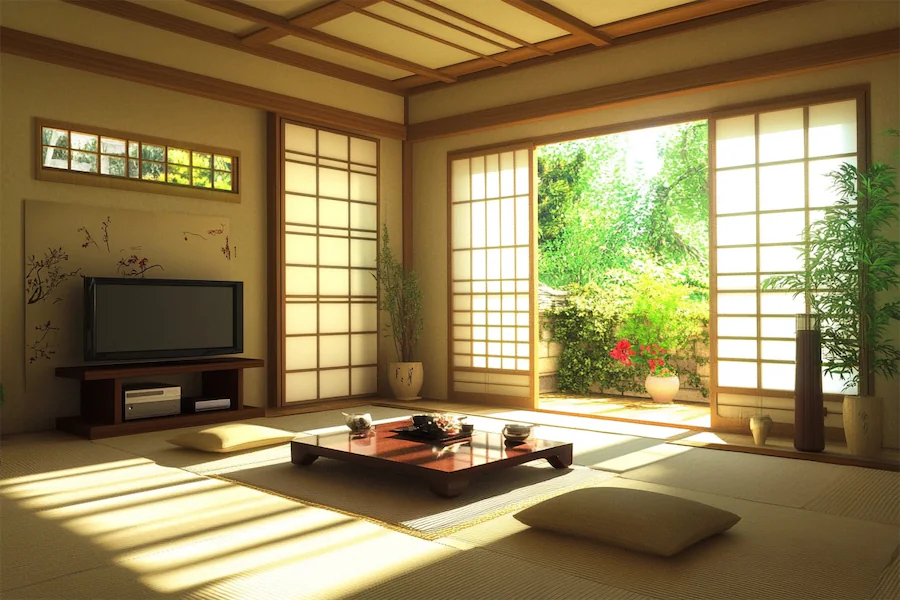Designing a Japanese modern entertainment room involves harmoniously blending traditional Japanese aesthetics with contemporary design elements to create a serene and functional space for relaxation and socialization. This article explores the key features, design ideas, and considerations for crafting such a room.
Introduction to Japanese Modern Entertainment Rooms
Japanese modern interior design emphasizes minimalism, natural materials, and a strong connection to nature. In an entertainment room, this translates to a clutter-free environment that incorporates modern technology seamlessly within a tranquil setting.
Key Features of Japanese Modern Entertainment Rooms
- Minimalist Design: Embrace simplicity by reducing unnecessary decor and focusing on essential furnishings. This approach creates a clean and uncluttered space, promoting relaxation.
- Natural Materials: Incorporate elements such as wood, bamboo, and stone to bring warmth and texture, reflecting the Japanese appreciation for nature.
- Neutral Color Palette: Utilize earthy tones like beige, brown, and soft grays to create a calming atmosphere. Accents of muted greens or blues can add subtle interest.
- Low-Profile Furniture: Opt for low seating arrangements, such as floor cushions or low sofas, to foster a sense of intimacy and connection to the space.
- Shoji Screens: Incorporate sliding shoji screens to divide spaces flexibly while allowing light to filter through, maintaining an open and airy feel.
Design Ideas for Japanese Modern Entertainment Rooms
- Integrated Technology: Conceal entertainment systems within minimalist cabinetry to maintain the room’s aesthetic. Consider built-in speakers and hidden wiring to reduce visual clutter.
- Natural Light: Maximize natural light through large windows or glass sliding doors. Use light-filtering curtains to soften the incoming light, enhancing the serene ambiance.
- Indoor-Outdoor Connection: Create a seamless transition between indoor and outdoor spaces by incorporating elements like a Zen garden view or access to a patio, reinforcing the connection to nature.
- Tatami Mats: Use tatami mats as flooring to introduce traditional Japanese elements, adding comfort and authenticity to the room.
Considerations When Designing a Japanese Modern Entertainment Room
- Balance: Achieve harmony between traditional Japanese elements and modern design to create a cohesive space that feels both timeless and contemporary.
- Functionality: Ensure that the room meets modern entertainment needs without compromising the minimalist aesthetic. Thoughtful storage solutions can help maintain order.
- Natural Elements: Incorporate indoor plants or water features to enhance the room’s tranquility and connection to nature.
- Personalization: While maintaining minimalism, add personal touches through carefully selected art pieces or decor that reflect your style and interests.
Conclusion
A Japanese modern entertainment room offers a tranquil and functional space that seamlessly blends traditional aesthetics with contemporary design. By focusing on minimalism, natural materials, and thoughtful integration of technology, you can create an environment that is both inviting and serene, perfect for relaxation and entertainment.
